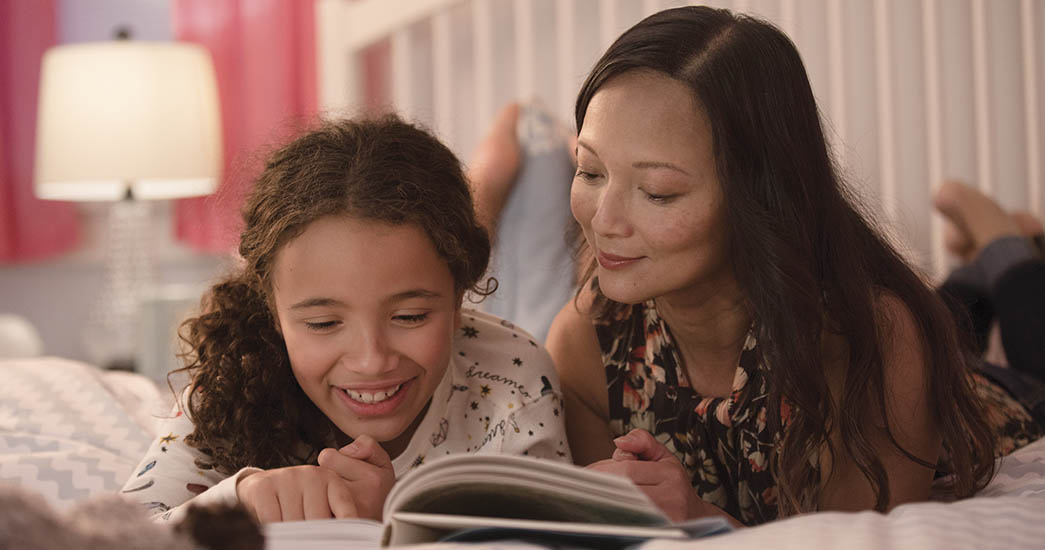
Published September 2019
Articles about the negative effects of screen time and social media on our well-being are everywhere. You’ve probably read about them, and most likely on one of your devices. And there’s the rub. While being online around the clock may feel like an inevitable by product of modern life, many people are seeking healthy, personal ways to connect.
And for good reason. If history has taught us anything, it’s that too much of anything has side effects, physically and psychologically. In fact, medical experts across specialties are now witnessing a rise in digitally related maladies, from the physical burden of headaches, carpal tunnel, and neck and shoulder pain to such mental ailments as anxiety and increased depression. With that in mind, many are taking new approaches to minimizing the amount of screen time in their lives. So, where to start?
 Digital Detox
Digital Detox
A “digital detox” is pretty much exactly what it sounds like – a break from devices. Most effective as a multi-day break (perfect for a weekend), some people find starting with a 24-hour retreat is more manageable. Whether it’s an entire weekend or just a 24-hour retreat, people who try a digital detox emphasize the benefits of unplugging, citing increased productivity, creativity, and more meaningful connections with loved ones, not to mention better sleep and less aches and pains. In fact, many experts insist you can feel the physiological effects almost immediately when initiating a digital detox.
Experts insist you can feel the physiological effects almost immediately when initiating a digital detox.
A few tips for success
![]() Consider getting a digital camera (or digging out an existing camera from wherever it’s been gathering dust) so you don’t reach for your phone to take a photo.
Consider getting a digital camera (or digging out an existing camera from wherever it’s been gathering dust) so you don’t reach for your phone to take a photo.
 Same goes for things like an alarm clock or kitchen timer.
Same goes for things like an alarm clock or kitchen timer.
Put the phone to bed for a weekend, and you may arrive to work on Monday a lot more energized.
 Library Hours
Library Hours
Being “on” all the time means getting into rest mode can be quite difficult, and the rejuvenating benefits of a good night’s sleep are being lost to sleepless nights – mostly because people are having a tough time winding down and disconnecting from their devices. It’s no wonder why insomnia is one of the most common side effects of excessive screen time. Implementing set screen-free times in your home (say, 7pm-7am) can help.
“Artificial light exposure between dusk and the time we go to bed at night suppresses release of the sleep-promoting hormone melatonin, enhances alertness, and shifts circadian rhythms to a later hour—making it more difficult to fall asleep.”
— Charles Czeisler, PhD, MD, Harvard Medical School and Brigham and Women's Hospital.
If you find yourself fidgety without a phone at bedtime, make a plan to be more active the following night. Even a 30-minute nighttime walk around the neighborhood could help you fall asleep. The fresh air and exercise allow for time to reflect and can help you focus your thoughts.
 Dumb Phones
Dumb Phones
Many people can still remember a time when we weren’t always buried in our phones and checking our feeds. And you know what? It wasn’t that bad. But if you can’t quite let go of all connection, a “dumb phone” might be a solid option. Despite the insulting name, dumb phones are a great tool for those looking to curtail their social activity, as they’re designed to only make voice calls and don’t offer all the other distractions of smartphones. The good news is, most mobile service providers have options for this type of phone, too.
Designed to only make voice calls and don’t offer all the other distractions of smartphones
And guess what? After spending some time in analog life, whether it’s a few hours each day or a more extended break, many people report feeling more creative, reconnecting with past interests, and enjoying more quality family time for a more balanced life.
 Kids & Social Media
Kids & Social Media
For kids, teenagers, and their families, managing a healthy digital life can get more complicated. Younger people are merging their online/offline lives with even less boundaries, and sharing and commenting on everything in the process.
We give away intimate details about our lives, what’s going on in our heads and bodies, presuming that it’s secure. It’s not only not secure nor safe; it’s currency to many people.
“We give away intimate details about our lives, what’s going on in our heads and bodies, presuming that it’s secure. It’s not only not secure nor safe; it’s currency to many people,” explains Dr. Michael Rich, associate professor of Pediatrics at Harvard Medical School, who practices adolescent medicine at Boston Children’s Hospital and is the founder and director of the Center on Media and Child Health (CMCH).
Cyberbullying, and the inadequacy or isolation that social media engenders in many youth, are topics that seem to make headlines on a weekly basis, but by spending more time with our kids (and off of our own phones), we can guide them to what healthy self-expression looks like. It’s not only about limiting exposure, but also helping to guide how they use and navigate digital spaces – which could even mean sitting down to play video games with them. After all, when kids know what being “liked” really feels like, clicks on a social stream hopefully won’t hold as much sway.

Common Sense Guidelines for Social Media
 Safeguard Selfies
Safeguard Selfies
Not everyone needs to see everything. If all you do is post selfies, try mixing it up. Self-worth is real in the real world.
Avoid Branding
Try to use social media as a place to share and stay connected with friends, and less a place to brand your life.
 Honor Boredom
Honor Boredom
Celebrate having nothing to do. Learn to be comfortable in this space, and the balance of your body and mind will thank you.
Take Sabbaticals
Taking a day off from technology can not only promote more real-life experiences, it can enlighten your perspectives of self-worth.
 Be Social
Be Social
Use connections to promote real-life interactions whenever possible, whether that’s joining interest groups or posting in forums that exchange ideas more than selfies.
Be Present
Guide your kids through the social media wilderness by paying attention to them, and participating in digital spaces with them.
Harvard Pilgrim Health Care is pleased to be celebrating our 19th year providing grants to our contracted providers who want to improve patient care. Since its inception, our Quality Grant program has funded over 290 projects, totaling more than $20 million in support to improve care delivery and reduce costs.
One such project was with the Children’s Center on Media and Child Health to produce a toolkit to help providers educate and communicate with parents and children about the impact of media exposure and usage on their mental health. For more tips on how to work with your children on media use, read this Internet Guide for Parents that is included in the toolkit.
To confirm eligibility for any programs or services mentioned in this article as it relates to your specific health plan, please reach out to your account executive or HR benefits team. You may also speak to our member services team at (888)-333-4742 or by sending a secure email. And for plan details and other member resources, log in to the member portal.